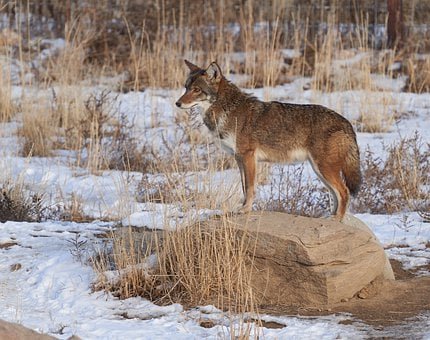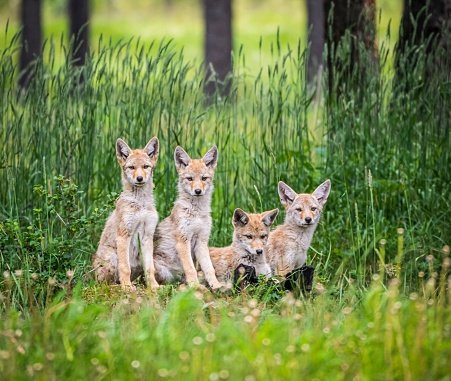Picture by Pixabay
The following information has been obtained from The Source, by staff writer Ben Rayner, on February 3, 2022.
In the latest edition of The Source, I read the article in which the Connecticut State Department of Energy and Environmental Protection Agency (DEEP) is reaching out to the community in an effort to educate residents about coyote behavior during these last couple months of winter. My interest was peaked because we live on a four-acre parcel with a variety of beautiful wildlife, including coyotes. My attention was also grabbed because we have a sweet senior pup who weighs in less than twenty pounds and a deaf dog who is roughly 38 pounds. Are there things that I need to know and do in order to protect my precious, four-legged family members?
According to Rayner, DEEP wants to increase awareness about coyote behavior and activity. Because there will be evident increased human interaction, this awareness is crucial and definitely needs to be heightened.
For one, the mating season takes place until sometime around the end of March. Male coyotes can become more aggressive and pose an additional threat to any and all pets. DEEP offers solid advice and actions that all of us are able to take and keep our precious, and often defenseless, pets safe.
TIPS:
Keep pets from running free.
Cats need to be kept inside, especially at night. Dogs need to be kept on a leash and/or under close supervision at all times.
This safeguard is critically important for our deaf or any physically challenged animal in our care. Without being able to hear an approaching coyote, our deaf dogs become endangered more easily, and the possibility of being attacked increases.
Avoid attracting or drawing coyotes into our yards. Never feed any animals, keep areas clean from birdseed, secure trash cans and compost piles, and clean up fallen fruit or vegetables.
Install kennels or coyote-proof fencing when possible. Remember, while it might seem obvious, invisible fences do NOT keep coyotes from entering our yards.
Use leashes at all times when walking our dogs so we can be in control if encountered by a coyote. Never turn your back to or run from a coyote.
Hikes or casual walks are so much fun when our pups are off leash and exploring the woods or area around us. However, our deaf dogs would never receive our command or cues to change course if they were off-leash. Keep them safe.
Remain calm if you cross paths with a coyote.
Remember that a male coyote can be extremely territorial and aggressive.
Attempt to frighten coyotes away by making loud noises and acting aggressively towards them. Be BIG. Coyotes are confident but aren’t prone to wanting to interact with humans.
Report unusual behavior or any coyotes showing symptoms of rabies such as seizures, salivating, extreme lethargy, or staggering. Remember that daytime coyote activity is NOT uncommon and does not necessarily indicate rabies.
Remove any areas that could make possible dens. Animal proof around and under any type of building on your property. Fill in crevices and remove hollowed-out trees.
Keep in mind that it is highly unlikely that a coyote will mate with a domestic dog. Coydogs are rarer than often thought.
Coyote pups. Picture from Pixabay.
Becoming overly worried or frightened about coyote presence or activity isn’t necessary. Prudent behavior and being vigilant in taking these steps create safe coexistence with our beautiful wildlife. We can live with God’s wonderful creatures, enjoy being comfortable in our surroundings, and know that we are doing everything possible to keep our deaf dogs and pets safe.



